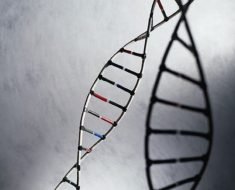FIU scientists are investigating the effects of hurricanes and other natural disasters on brain development in children. Preliminary findings suggest these disasters contribute to increased post-traumatic stress symptoms.
For the first time ever, researchers are able to look on a large scale at both neurobiological and clinical information obtained before and after a hurricane makes landfall. Using data from the Adolescent Brain Cognitive Development Study (ABCD)—the largest long-term study of brain development and child health in the United States—FIU psychologists Jonathan Comer and Anthony Dick are comparing child brain function before and after hurricane Irma with the intention of studying children’s response to disasters more generally.
The recently released ABCD dataset gave them access to baseline data from three sites affected by Irma—Miami and Gainesville in Florida and Charleston, S.C.—providing a unique opportunity to study the effects of natural disasters in children and collect valuable data on a broad scale. Comer and Dick are combining this existing data with new data to evaluate each child’s experiences related to Irma. They also surveyed children in San Diego for comparison.
Preliminary results show increased post-traumatic stress symptoms in children who evacuated under stressful conditions as well as those who remained directly in Irma’s path during the storm. These are the children who felt the impacts of the aftermath first-hand and were exposed to large doses of storm-related media coverage in the affected areas. Children in San Diego also exhibited post-traumatic stress symptoms associated with Irma-related media exposure even though they were not directly in harm’s way.
“We hope to provide guidance for how communities and families can better prepare for and respond to disasters in ways that mitigate potential long-term child suffering in the aftermath of disaster,” Dick said. “This work will identify key factors that can promote resilience in children exposed to disasters.”
Comer and Dick recently presented findings of their National Science Foundation-funded study on Capitol Hill as part of the Coalition for National Science Funding. They were in Washington, D.C. to meet with members of Congress and their staff to advocate for continued science funding.
The next step is to collect additional data from the same families during the year following Irma. The children will also be followed into adulthood to find out how their brains respond to various disaster-related incidents. This will complete the first large-scale study of the effects of disaster exposure on children that incorporates biological data including neural and genetic factors, cognitive, clinical, and neuropsychological outcomes.
“Understanding complex and dynamic interactions that unfold across time when disasters affect youth is important for developing appropriate public response,” Comer said. “Parents, first responders, and media and policymakers at local, state and federal levels must know which actions can have particularly negative effects on disaster-exposed youth and which factors can instead promote resilience.”
Comer has conducted extensive research on the psychological impact of traumatic events on youth. As director of the Mental Health Interventions and Technology Program at FIU’s Center for Children and Families, he conducts research on expanding the quality, scope and accessibility of mental health care for children and adolescents. Dick is a co-investigator in the ABCD study and director of the Cognitive Neuroscience program at FIU. He studies the development and neurobiology of language and executive function. He uses neuroimaging methods, including functional and structural magnetic resonance imaging (fMRI and MRI) to examine typical and atypical child development.
Source: Read Full Article




